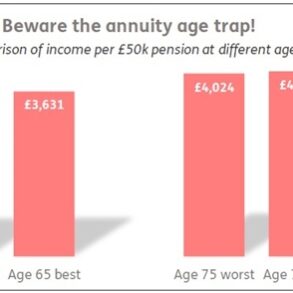
Mahatma Gandhi famously said: “What difference does it make to the dead, the orphans and the homeless, whether the mad destruction is wrought under the name of totalitarianism or in the holy name of liberty or democracy?”
In saying this, he compelled the world to see war and conflict from the perspective of those least able to defend themselves. War and conflict, however, have impacts beyond senseless killings.
Looking over our shoulder to war over the last century, the destruction of Dresden’s Frauenkirche on 13 February 1945, what we have come to understand as an act of bravado by the Allies during World War 2, was perceived by eyewitnesses as “the traumatic signature of a completely wanton attack on one of Europe’s greatest cultural treasure troves”.
The writer Kurt Vonnegut quite eloquently captured the destruction of Dresden in his book Slaughterhouse Five.
At the end of World War 2, soldiers from the US (and western Europe) looted Germany’s cultural artefacts. As recently as 2021, one of the world’s largest collections of German art, notably Nazi propaganda, was in a warehouse at Fort Belvoir in northern Virginia. Individual soldiers were responsible for some of the cultural vandalism and looting of German art.
Soviet soldiers took “millions” of cultural artefacts from the collapsed German state after the war. Not that it needed reminding, but the Yves Saint Laurent Auction Controversy (where art works that had been looted during the Opium Wars was put on sale) demonstrated, in our times, the persistence of war booty in the world.
Destruction of cultural heritage is, then, not always physical “destruction” but includes the raiding, looting and carrying away of “war booty”. The United Nations Educational, Scientific and Cultural Organisation (Unesco) defines cultural property as “movable and immovable property of great importance”.
In a statement of principle, a former director-general of Unesco, Irina Bokova, has said: “Heritage, before being a building, is a consciousness and a responsibility. When violent extremism attacks culture and cultural diversity, it is also necessary to respond with culture, education, knowledge, to explain the meaning of sites and share the message of tolerance, openness and humanity that heritage carries.”
Notable heritage sites destroyed by organised violence (war), include Aleppo and Palmyra in Syria; religious sites in Timbuktu, Mali; the Buddhas of Bamiyan in Afghanistan; China’s Old Summer Palace in Beijing; the former Prefectural Industrial Promotion Hall that was destroyed by the US atomic bomb in Hiroshima; and Jonah’s Tomb in Iraq.
This is not an exhaustive list, but it is consistent with the belief that destruction of a society’s cultural heritage is part of war. The destruction of tangible cultural heritage, however, can, and often does include destruction of ritual practice, beliefs and symbolism. These forms of destruction, while not necessarily involving the physical death of individuals, can herald the psychosocial and cultural “death” of communities.
It is early to assess or measure with any accuracy what damage to cultural heritage sites will emerge from the present Palestine-Israel conflict. In past conflicts, sites of cultural value have been targeted.
However, what is clear is that the ongoing conflict does impact on peoples’ ability to safely practise and express their intangible cultural heritage and thereby, affects their human right to culture.
The UN recognises the impact of war on cultural heritage. It recently reported that within the first three or four months of the Ukraine war, 152 cultural sites in Ukraine were partially or totally destroyed, including 70 religious buildings, 30 historical buildings, 18 cultural centres, 15 monuments, 12 museums and seven libraries. The organisation swiftly instituted measures to restore some of these heritages, even in the face of ongoing conflict.
‘Peace in the minds of men’
The purpose of Unesco, founded at the end of World War 2, is to establish “peace in the minds of men”. This is to be achieved by identifying, nominating and conserving cultural diversity expressed in culturally valuable sites, monuments and artefacts, as well as intangible cultural expressions of universal value.
Unesco has conserved cultural heritage (inter alia), via its World Heritage Convention (1972) and the Convention for the Safeguarding of the Intangible Cultural Heritage (2003). The latter, often discussed as the ICH Convention, is for the safeguarding of globally valued ritual practices, beliefs, symbolism, songs and oratory.
During war, cultural artefacts and sites of cultural and natural value are often destroyed. People are also scattered from their socially meaningful places. The cultural relations which sustain social cohesion and the integrity of tangible heritage sites may be destroyed.
A significant mandate of Unesco is to safeguard and restore cultural heritage during and after war. This is a difficult task because of geopolitical alliances and the fact that humanity has a diverse and often violent heritage of war.
There are wars of honour and codes of honour in war. In Sun Tzu’s Art of War for instance, warring states are advised to attack cities and civilians only as a last resort.
But globally, wars remain both violent and dishonourable. Colonial wars divide communities and reduce the dignity of human beings. Remote, dirty wars attempt to hide the true human cost of conflict. Civil wars often lead to gross human-rights violations against women and children. In the case of the present Israel-Palestine conflict, children are targeted, and those in Gaza appear trapped in a conflict waged in apartheid confines.
Given the United Nations concern for human rights, it is important that Unesco recognises and responds to what we call abhorrent cultural heritages. War and conflict are abhorrent cultural heritages.
Abhorrent cultural heritage
If the UN and Unesco are true to their mandates, they should adopt three immediate global actions. First, the UN should publicly condemn the Israel-Palestine conflict (as well as the war in Ukraine) as abhorrent, and Unesco should declare war and conflict forms of abhorrent cultural heritage. War abhors and erodes the protection of human rights, and it leads to the destruction of cultural heritage.
War is abhorrent because it also erases the complexity and dynamism of cultural heritage. It erases the multiplicity of human existence, shared cultural spaces and meaning. It erases the possibility of crossing cultural boundaries and of learning from others who appear different from ourselves.
Anthedon, the first seaport of Gaza (now on Unesco’s Tentative List of heritages to be preserved) is one of the world’s most ancient coastal sites, but it is also one of the world’s most diversely constituted sites. It, and nearby areas, hold multiple spiritual, archaeological and political histories.
Cultural heritage signification in Anthedon has changed over time. Thus, war is not just about the assertion of symbolic power when political regimes change, nor is it merely about the looting of artefacts of value – it can erase a history of diversity, including histories of collaboration and cultural sharing.
At its most extreme, war is abhorrent because it can lead to mass murder. For this reason, as well, Unesco should (in collaboration with other relevant UN agencies) initiate a swift set of “actions” to condemn and intervene in the present Israel-Palestine conflict because it has the potential to lead to genocide.
War-led genocide was apparent in World War 2, in the Nigerian Civil War (1967), Somali Civil War (1991), Bosnian War (1992–1995) and in Rwanda (1994). These wars also led to the gross violation of women and children’s rights. Countless women and children were violated and brutalised during these wars. The examples are too heinous to contemplate.
It is impressive that more than 1,000 heritage monuments and sites are inscribed on Unesco’s World Heritage List and that these cultural heritages showcase the creativity and beneficence of humankind.
However, the world needs to acknowledge that it has heritages that are also deeply problematic, morally ambiguous and destructive. By recognising the existence of Abhorrent Cultural Heritages and what needs to be done to condemn and limit their effects, Unesco will play a more critical and valuable role in advancing a world where peace truly reigns in the minds of all.
Unesco has a unique opportunity to act. The world hopes that it does, not just for those directly affected by war, but for all those who are witnessing the violent consequences of war and conflict.
Those who now witness war and its atrocities, experience it vicariously. It is much worse, in our view, to be at war and to experience its abhorrence, first hand. Unesco needs more courage. Courage is rare.
But as Edmund Burke reminds us: “The only thing necessary for evil to triumph in the world is that good men do nothing.” DM
This post was originally published on this site be sure to check out more of their content.









